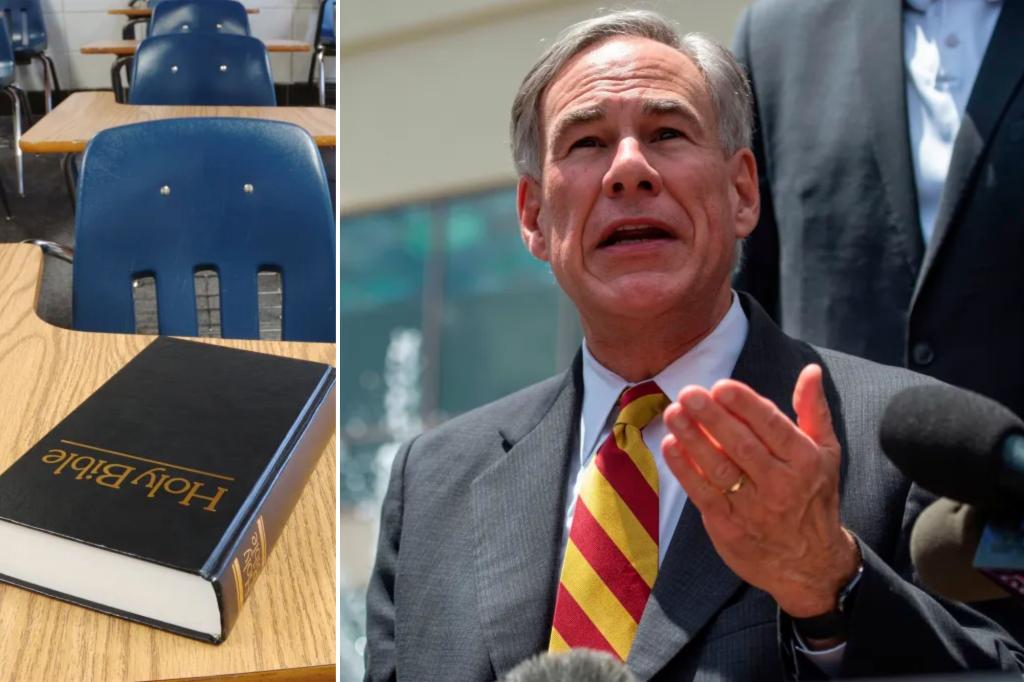The clash between religious instruction and public education in Texas has intensified with the introduction of the Bluebonnet Learning curriculum. This free-to-use elementary school curriculum, narrowly approved by the State Board of Education, has sparked controversy due to its perceived emphasis on Christianity and biblical teachings. A coalition of legal organizations, including the American Civil Liberties Union of Texas, Americans United for Separation of Church and State, Center for Inquiry, and the Freedom From Religion Foundation, has issued a stern warning to Texas school districts, contending that adopting the curriculum would violate students’ constitutional rights by imposing religious beliefs. The coalition has signaled its readiness to pursue legal action to prevent the implementation of the curriculum, setting the stage for a potential legal battle over the separation of church and state in Texas education.
The Texas Education Agency (TEA), however, maintains that Bluebonnet Learning does not constitute religious instruction, asserting that the inclusion of religious topics serves a literary and historical purpose, contributing to a well-rounded education. The TEA emphasizes that the curriculum draws from a variety of faiths and incorporates religious source materials for their historical and literary value, aiming to provide students with a broad understanding of different cultures and belief systems. This defense highlights the central point of contention: whether the curriculum’s treatment of religion is educational or indoctrinational. The debate revolves around the frequency and context of religious references, with critics arguing that the curriculum disproportionately favors Christianity, potentially leading to the marginalization of students from other religious backgrounds.
The controversy surrounding Bluebonnet Learning unfolds against a backdrop of evolving legal interpretations of the Establishment Clause, which prohibits government endorsement of religion. Recent Supreme Court rulings, particularly the case involving a football coach’s prayers, have muddied the waters regarding permissible religious expression in public schools. The court’s abandonment of the “Lemon test,” a long-standing standard for evaluating church-state entanglement, has created uncertainty about the boundaries of religious activity in public settings. This legal ambiguity complicates the assessment of Bluebonnet Learning, making it difficult to determine whether its religious content crosses the constitutional line. The legal organizations argue that the curriculum’s treatment of biblical stories as factual and its focus on Christian teachings constitute an endorsement of religion, while proponents maintain that the content is presented objectively for educational purposes.
The curriculum’s content has drawn criticism for its portrayal of Christianity, with critics alleging that it presents biblical narratives as historical fact and lacks a balanced representation of other faiths. Specific examples cited by opponents include a lesson on The Last Supper that allegedly treats the Book of Matthew as a literal account and a unit that describes Jesus as a historical figure without qualification. The curriculum also reportedly asks students to repeat phrases from the Book of Genesis and recall the order of creation as described in the Bible. These elements, according to critics, promote a particular religious viewpoint and fail to provide a neutral and comprehensive understanding of religious diversity. This critique raises concerns about the potential impact on students from non-Christian backgrounds, who may feel excluded or pressured to conform to the dominant religious narrative presented in the curriculum.
The adoption of Bluebonnet Learning is not mandated, and school districts retain the discretion to choose whether and how to implement its materials. This localized control allows for variations in implementation, with some districts potentially embracing the curriculum fully, while others may opt for partial adoption or reject it altogether. The South San Antonio school district has already voted to adopt the materials, while the Eagle Mountain-Saginaw district plans to utilize only the math portion. The Conroe school district is currently considering the curriculum, and the Denton school district has publicly stated its intention not to consider it. This range of responses reflects the diverse perspectives on the curriculum and the challenges faced by school districts in navigating the complex intersection of education and religious freedom. The financial incentive offered by the state – $60 per student for adopting the curriculum – further complicates the decision-making process for districts, potentially influencing their choices.
The debate surrounding Bluebonnet Learning exemplifies the ongoing tension between religious freedom and the principle of separation of church and state in American public education. Proponents argue that the curriculum provides a valuable historical and cultural context by exposing students to the influence of Christianity and the Bible. They maintain that the materials cover a range of faiths and that religious references are made only when relevant to the subject matter. Conversely, critics contend that the curriculum’s emphasis on Christianity constitutes a form of religious indoctrination and violates the constitutional rights of students from different religious backgrounds. The legal challenge posed by the coalition of organizations represents a significant development in this ongoing debate, potentially leading to a judicial resolution of the complex issues at stake. The outcome of this conflict will have far-reaching implications for the future of religious expression in public schools, shaping the educational landscape for students across Texas.

